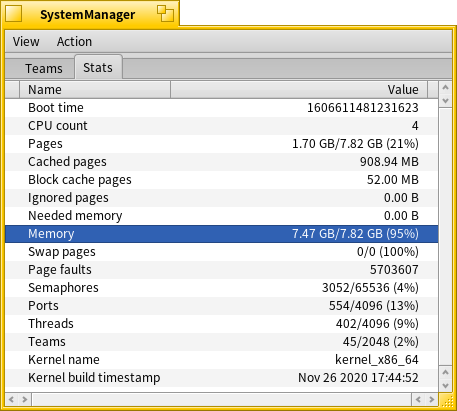When experimenting with test_app_server sometimes I get some strange situation:
-
test_app_serverdisplay following in stdout:
FontCacheEntry::Init() - some error loading font file /boot/system/data/fonts/otfonts/NotoSansCJKjp-Regular.otf
FontCache::FontCacheEntryFor() - out of memory or no font file
- “low resource manager” kernel thread start to significantly consume CPU. I am not understand what this thread is doing and I had issues with it in past.
-
test_app_serverwill freeze for several seconds. - Debugging API will stop working. Attempt to attach debugger by my SystemManager, Haiku Debugger will cause unknown crash, attempting to save report will also crash.
- Screenshots stop working.
- No known system resources (memory, teams, threads, ports, semaphores) are exhausted. SystemManager show no more 13% of any resource usage in Stats tab.
- When terminating
test_app_serversystem is recovered. - Following is written to syslog:
KERN: low resource memory: warning -> critical
KERN: 0xffffffff9e00aa40->VMAnonymousCache::_Commit(16429056): Failed to reserve 16429056 bytes of RAM
KERN: 0xffffffff9dc76968->VMAnonymousCache::_Commit(394526720): Failed to reserve 19267584 bytes of RAM
Message similar to last line is repeated. System is 64 bit.
Issue can be reproduced by resizing TextRendering or FontSpacing window in test_app_server.
Anybody has ideas what is going on and what resource get exhausted?

